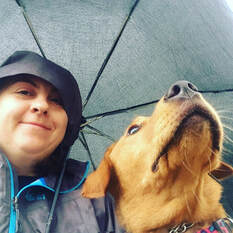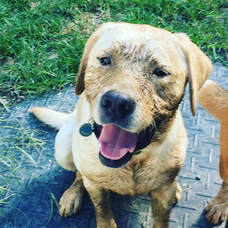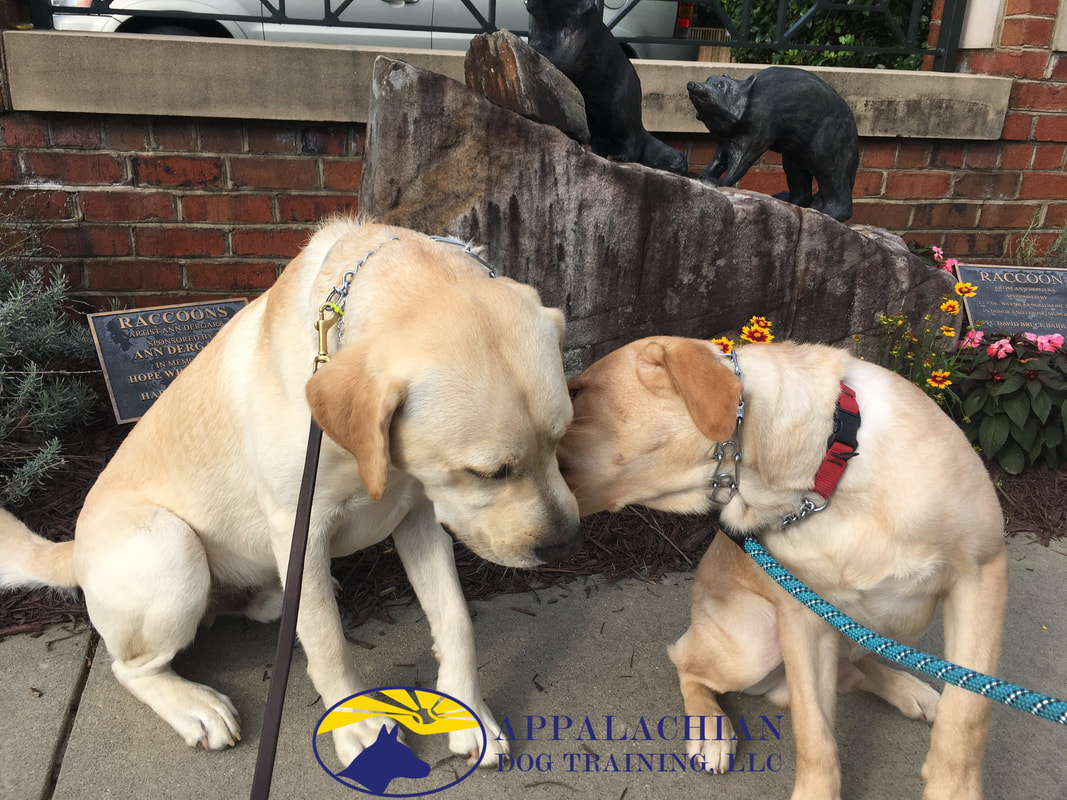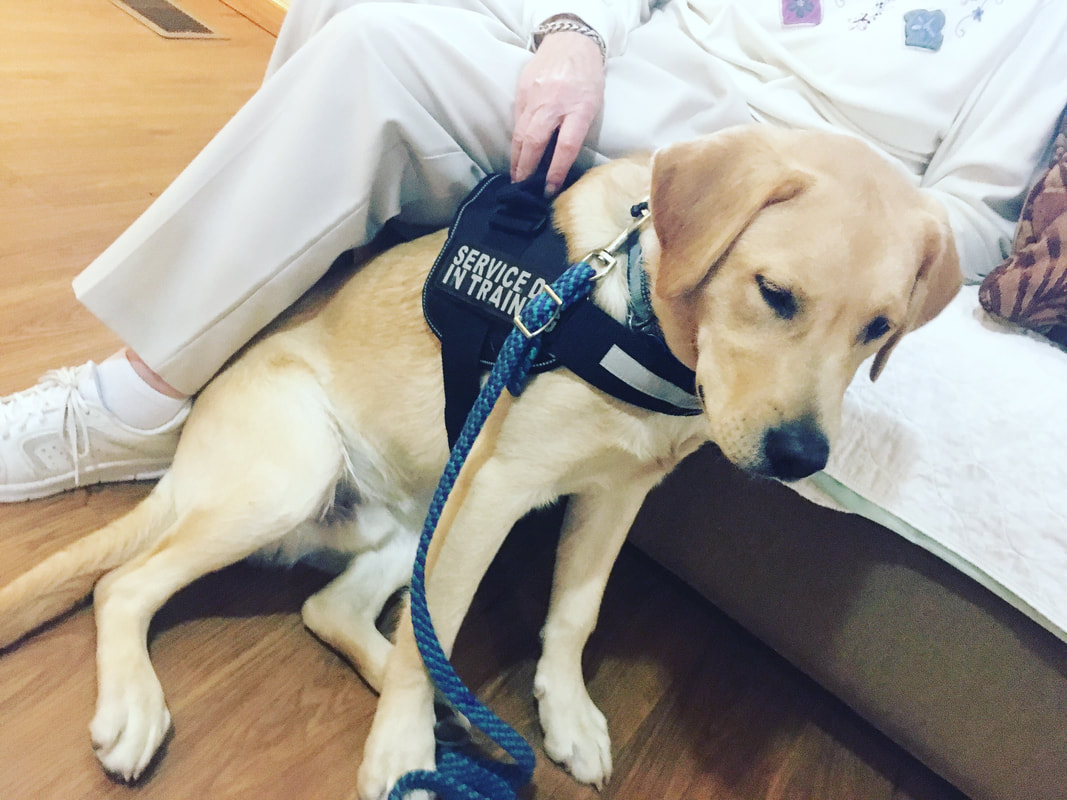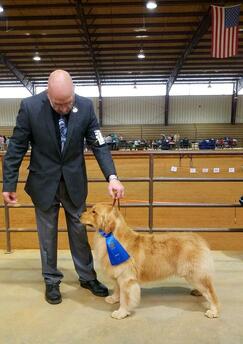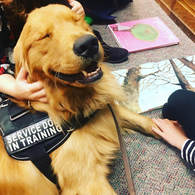Electronic E Collars Include Many TypesE-collars are most commonly used for obedience training, working dogs, containment, location tracking, hunting, and nuisance barking. They are used to train and command working dogs and family pets. Electronic (E) collars deliver a vibration, audible tone, squirt of citronella, or static shock. This delivery can be initiated by remote button or automatically via sensors in the collars, satellite control (geo tracking), or wirelessly (fence systems). Technology has altered the landscape of our lives. We use technology to make life easier and safer. Yet some pet owners, dog professionals and European countries are opposed to using this advanced technology. So why are we dropping the ball on technology when it comes to our greatest companion, the dog? Who is using E-Collars?Pet owners, professional dog trainers, rescues, handlers, law enforcement, TSA, Border Patrol, wildlife conservation officers, service dog handlers, hunters, farmers, and rescue volunteers can use E-collars to train and command their dogs. Dogs trained on E-collars may be a family pet or a working dog for service, police K9, tracking, explosive detection, narcotics detection, hunting, herding, security dog, or search and rescue (SAR) dog. They include dogs of all breeds and sizes. Pet owners seek training to overcome problems that are causing stress within the family and even danger to the family or to the dog himself. The dog may be injuring children by scratching them, knocking down guests by jumping, barking 24/7 keeping neighbors awake, running out of the yard into traffic, or regularly ingesting foreign objects. Pet owners need a way to effectively and reliably command and control their dog to keep family members, guests, and their loved dog safe. Most commonly I encounter pet owners who have trained their previous dog with an E-collar and grew to love the control, freedom and safety it provided. They return to E-collar training to provide the same opportunity for their new dog. There are people out there with dogs that differ from yours and different dogs have different needs. Just as one family wishes to send their child to public or private school, another family may make tremendous sacrifice to homeschool their children. Neither family is wrong! The beauty of living in the United States of America is having freedom of choice. Freedom to choose what is best for your family; including your dog. As a United States Navy Veteran, I take great pride in the freedoms we know and have today and, as a canine professional, I strive to preserve of the working role between human and dog; the very thing that fueled domestication of the dog (or the human!) 15,000+ years ago. Why E Collars are Used IncorrectlyAs a Professional Dog Trainer in the industry for over 20 years, the most common error with E-collars is inexperienced pet owners or trainers accidentally creating a negative association when they don’t fully understand how to use one. I had been training dogs professionally for over 10 years before I learned how to use an E-collar at Highland Canine International School for Dog Trainers. Figuring out how to use an E-collar was complicated; no wonder the average pet owner or novice dog trainer can get it wrong! The world is a good place and we are not overrun by horrible pet owners or mean dog trainers! Wether you are curious about the E-collar or despise it, learning more about it will make you a more educated pet owner and dog trainer. Understanding how evolution of our working relationship with the domestic dog will help you to understand modern day working roles, including the most common canine job; the well-mannered family pet! E-Collar Dog Training Done RightThe E-collar is a tool that will not help or train a dog in and of itself. This tool must be of high quality (no broken, outdated, or cheap equipment) and must be accompanied with a comprehensive training plan. There is more than one way to train a dog! I am familiar with hundreds of professional trainers and their methods for training with an E-collar. The best E-collar training programs first teach the dog commands on the leash then introduce the E-collar training slowly over a period of time. Done right, the dog will not become fearful or anxious. There is some level of stress that is characteristic all novel learning experiences, including very basic leash training. Beyond the experience of learning something new, a good dog trainer or pet owner with a solid training plan will see positively remarkable improvements in the dog’s behavior and demeanor. A skilled dog trainer will be able to demonstrate a dog’s increased confidence, decreased fear, reduced anxiety and improved environmental stability at completion of training. I have taken hundreds of scared, anxious dogs and watched them transform into confident, social, happy creatures in a matter of 6-8 weeks. Many of these dogs were saved from being euthanized as a direct result of the E-collar training I gave them to overcome aggressive behaviors. The dog’s mind can be changed dramatically when you have the skill and ability to transform them! Life Without E-collarsBanning the E-collar in Europe will reduce (not eliminate!) unskilled pet owners and novice trainers from using them incorrectly. Unfortunately, limiting information, banning E-collar training, and restricting access to quality dog training will not make dogs safer to live with, more enjoyable, or preserve long-held working roles. It will result in more dogs being re-homed or euthanized when things go wrong. In the US and abroad, we can take action and reduce incorrect use of the E-collar by educating pet owners and encouraging pet professionals to learn more about the varied applications of the E-collar for training pets and working dogs. One does not need to be an advocate for E-collars to gain a more comprehensive understanding of safe, effective and humane training programs. Dog trainers that have studied scholarly sources of learning theory and modern domestication of the dog can objectively review training information even in the presence of conflicting values against E-collar use. Knowledge is power and no one person, pet owner or pet professional should be denied information, education, and freedom of choice when they are doing what is in the best interest of the dog. How E-collars are Actually UsedE-collar training persists because of the varied applications of use and effectiveness it can provide. Many pet owners, rescues, dog trainers and working dog handlers rely on the ability to use the most innovative training techniques and tools (the E-collar) in order to accomplish more with their dog. This is an inclusive but not exhaustive list! Pet owners:
Dog trainers and Working Dog Handlers:
Preservation of the Family Pet and Working DogUtilizing training, training tools, and the implications of commanding and controlling dogs is necessary to preserve the primary purpose of the dog; work!
Modern working roles of most dogs are limited to the family pet, however this is still very much a job! The family pet needs to go on walks, tolerate crying children, navigate urban environments, and be socially acceptable in sometimes difficult and demanding situations. Working dogs and well trained family pets are proof that E-collar training works and works well. Explosives Detection Dogs (ED’s), Narcotics Detection Dogs (Single purpose K9’s), and SAR Dogs (Search and Rescue) are just a few examples of ways we have altered the dog’s natural ability to hunt alongside the human, combing the scent abilities of the dog with the sight and planning abilities of the human. The two combined make a team superior to any other! Working dogs and their handlers are honing in on natural and trained abilities to perform their work. If either the dog or handler is overly stressed, fearful, anxious or otherwise in a negative state neither can perform their jobs. There is absolutely no detection, search, service, or patrol dog that is forced into their job; the dog possess a natural drive to hunt/search/work and can only do so in a state of neutrality and confidence. Trainers and handlers do direct their working dog with commands and tasks but these requests (communicated with an E-collar) do not inflict fear or anxiety within the animal as that would end the dogs working ability and, ultimately, their career. The dog’s role has changed drastically and continues to change at an even faster rate with technological advances of modern society. The roles dogs perform and their capabilities are just being discovered and developed. Preserving and developing the modern working dog is dependent on research, education, training, and making advances within the understanding of domestication of the dog. Education will reduce inappropriate use of the E-collar. You can help dogs by learning how an E-collar can be used appropriately and by observing the results of professional E-collar training. Find a local working dog handler and ask them how the E-collar helps them to do their job! Learn from the people who are using them as they have direct experience with the effects of using E-collars. Prohibiting information and E-collar training will inhibit national security, local law enforcement capabilities, opportunities for the disabled, and will directly affect your comfort and safety at home and out in public. As an American and canine expert, I respect your choice to not use an E-collar, but I do ask you to support the preservation of the domestic dog; work! Author: Katie Weibel, April 30, 2023  Take these steps today and gain confidence in your pet’s food choice! Tired of hearing your pet’s food is not good? Every pet food review shows recalls and warnings, making you nervous about your chosen food. Of course you have selected the best food for them; you love your pet! But why is everyone telling you that your pet food choice is inadequate or even dangerous? At Appalachian Dog Training, LLC we provide a Pet Food Nutrition Consult with every training program including Board and Train and Private Training. We want your dog to feel their best and live a long, happy life. Our Trainers are Canine Nutrition Certified through Dogs Naturally certification course. Take these 3 steps today and gain confidence in your pet’s food choice! 1. Read and understand the pet food ingredients 2. Beware of marketing influences/ misleading advertisements 3. Evaluate a pet professional’s specific experience with canine nutrition Why Pet Food Brands Get Labeled as Bad
We want you to feel confident that you are feeding your dog well, building health and longevity. It is overwhelming to switch to a new food based on recommendation only to find out next month that you could be feeding your dog a better food. No one would feed their pet an unhealthy food, so why is this even happening? How Pets End Up Eating Unhealthy Food
Take these steps to evaluate your dog's food on your own. These skills will help you for a lifetime as you will always be able to read new food labels and argue the facts that prove them to be healthy foods or low quality foods. Step 1: Read and understand the pet food ingredients The top 5 ingredients are the most important. They are listed in order of quantity meaning that the majority of the food is in the first ingredient. The bulk of the food will be made of the first 5 listed ingredients. Beyond the first 5, we most often find vitamins, minerals, preservatives and food colorings. The first 5 need to be protein sources such as beef, pork, turkey, whitefish, salmon, and chicken. If the ingredient is listed as “pork” that is best as “pork meal” is every part ground up and processed. Corn, corn meal, ground corn should never appear in the first 5 as dogs cannot receive any nutritional benefit from corn. The worst protein source would be “meat”, “meat meal”, or “animal fat” as these terms can indicate any animal, and any and all animal parts. The ingredients should be specific like “pork” or “turkey” and should not be vague like “animal fat”. In the pet food industry vague = hidden! Vitamins and minerals can sound like chemical names, but just google the terms and you will determine which ones are everyday, naturally occurring supplements. Those are good! Preservatives and food coloring are ALL BAD!! The most common preservatives are BHA and BHT. These are used to keep the food shelf stable. Higher grade brands do not spray their foods with chemical preservatives, rather they spend money on special airtight bags and packaging to keep their food fresh and shelf stable. Food colors Yellow, Red, Blue must all be avoided! Not only are these items toxic to you and your dog, but dog’s cannot even see the colors in food. The food dye is a marketing scam intended to get you to buy. Steer clear! Step 2: Beware of Misleading Marketing Misuse of terms is the best trick marketing uses to confuse us. “Natural” and “holistic” are the most trendy terms that hold little to no value. Instead, we must evaluate the quality of the ingredients the company is using. Low quality brands will use low grade of proteins -meats- which means rendered animals. Rendering is a process that converts waste animal tissue into usable materials. Y U C K ! Human grade ingredients confirms that the animals used in processing would meet the standards for human inspected foods. This is where we want to source our pet’s food; from the same safe standards as our own food. Step 3: Evaluate a Professional’s Association with Brands Pet professionals are an obvious source for best nutrition information. While some pet professionals do specialize in nutrition, many sell a specific brand of food and will of course recommend it as the best choice. Breeders and rescue groups get price breaks on food and will suggest you feed that same brand. While it may be a good brand for their needs or organization, your individual pets’ needs may differ. Either path is fine as long as it meets your standards and you feel confident that you are feeding your dog well and your dog is void of nutritional ailments. The key is to read and evaluate your dog food label to make your own determination. Feel Confident About Your Pet’s Food! Arming yourself with this information and studying your pet food’s label will give you the confidence to make your own, informed decision. “Fresh is best” meaning raw, prepared diets are the most natural feeding plan. Fresh food is more costly and more difficult to prepare but the nutrition benefits are huge. The next best option s to find a human-grade dry food in which you have read and understand each of the ingredients. Taking these steps will help guide you to making an informed decision you can feel confident about!
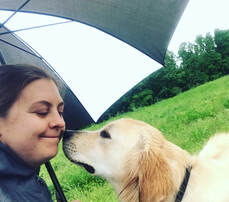 Rate Your Dog’s Fear of Thunder.......... Is your dog’s fear of thunderstorms affecting his or her life? Is it affecting yours? Are you worried only for your dog when storm warnings flash across your phone? If thunderstorms are affecting your dog negatively, learn how to prevent and stop fear of thunderstorms with these simple tips from the experts at Appalachian Dog Training, LLC. Be honest and rate your dog’s fear of thunder: A- doesn’t notice a storm B- mildly agitated but goes about eating, sleeping, playing C- significantly affected by pacing, panting, drooling, vocalization, hiding D- fear of many noises such as fireworks, gunfire, tools, construction Dogs in the A and B category can be helped with PREVENTIVE training methods. If your dog is in this category, you will have the greatest impact on him or her now. Waiting, or ignoring the early signs of fear of thunder will not make it stop, decrease or go away. Acting with behavioral tips and training can halt and reverse the early signs of fear of thunder. PREVENTING Fear of Thunder
TREATING Fear of Thunder Dogs rated in the C and D categories benefit from behavioral treatments. Progress is possible at any age, do not despair. Treatment may include pharmaceuticals in cases where the dog is self-harming or in cases of extreme anxiety. You must work closely with your veterinarian for this type of treatment, as behavioral protocols (training) must be adhered to and adjustment of type and dose of RX medication must be closely monitored by you and your veterinarian. Medication is not a requirement, and you may find significant affects from homeopathic treatments such as Rescue Remedy, DAP Dog Appeasing Pheromones, and the anti-anxiety wrap known as the Thundershirt.
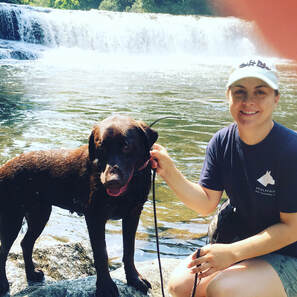 Asheville, Dog City! Asheville, North Carolina should be known as “Dog City”! This beautiful mountain town is a hot spot for dog friendly parks, stores, dining, bars and activities. We may be a bit smaller than top-rated dog friendly cities San Francisco or Denver, but what Asheville lacks in size (its not the size of the dog, right?!) it makes up in character. Whether you are searching for the ultimate pet-friendly destination or outdoor adventure, Asheville in the place your pet is wanted! Maybe it’s the fresh mountain air, the melting pot of artists, crafters or genuine southern flair, but it’s the place you will feel included with your dog. Most all parks are dog friendly, but of course they require a leash to keep both you and your dog safe. Asheville does have bears and snakes, oh my! With a little reciprocation of that southern love, you and your dog, too, shall enjoy the bounty of nature in Pisgah National Forest, Dupont State Forest, and its some 250+ waterfalls. After your hike, bike, walk, swim, or wade head south down Route 26 to Brevard for an old-school lunch on Main at Mayberry’s. Brevard is home of the white squirrel, see if your dog is confused, too! Downtown Hendersonville is also just below Asheville and has much to offer, from outdoor dining to many pet-friendly shops and boutiques. Either town is sure to delight your senses and welcome your dog. Calling it a night? Head back up Route 26 back to Asheville, and see why they call them the Blue Ridge Mountains! Try to keep your eyes on the road, it is hard with this natural beauty. Take a long breath and enjoy the last of the evening sunset in beautiful downtown Asheville with a band at the pub, or a street performing musician at the corner café. Expect to be interrupted, everyone will want to meet and greet your four-legged friend! When it’s time to retire, you will find yourself cuddling up in the most pet friendly cities in the nation; Asheville, Dog City! From Airbnb’s to luxury log cabins, you are sure to find a home away from home, but be forewarned, many will fall in love with Asheville, Dog City! 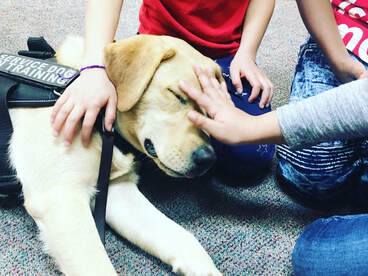 Become a Therapy Dog Handler and Make a Difference! Therapy dogs bring smiles, brighten the room, and offer a reprieve from endless grief. Dogs can sit quietly, absorbing and washing away a person’s sadness. They don’t mind if their beautiful coat becomes soaked with tears, and they don’t ask anything in return. Therapy dogs visit rest homes, schools, group homes, children’s homes, hospitals, and rehabilitation homes. They can be part of a special emergency response team, such as TIP (Trauma Intervention Program), and work on-call to provide support to those facing “the worst day of their life”. As a volunteer, you and your dog can work independently or with an organization. If you plan on visiting multiple facilities or desire to volunteer with a larger organization, you will most likely be required to be certified as a “therapy dog team.” As an independent volunteer visiting one facility regularly, you may find that you do not need to be certified as a “therapy dog team.” Each facility has its own policy for visiting therapy animals. Call and ask what their requirements are. They may require no certification, or they may require you be certified by a specific organization, such as Alliance of Therapy Dogs. They may also require a background check or flu vaccine. Often, if you are visiting a family member daily in a rest home, they may only require the pet’s vaccine records. Whether you visit one facility or many, achieve certification with one organization or the other, or become certified at all, you MUST have a dog with the right personality and skills to do the job safely and effectively. NOT ALL DOGS WANT TO BE THERAPY DOGS! Does your dog enjoy being next to you and petted? Does he or she nudge or elicit petting from strangers? Or does she duck away when being reached for? NOT ALL DOGS HAVE THE SKILLS TO BE THERAPY DOGS Is your dog extremely well socialized? Not fearful of men, women, children, hats, gloves, medical equipment, dogs, cats? Is he or she calm and relaxed, or hyper and jumping on guests? Has your dog ever growled, snapped at, nipped, or bitten another person or dog? REQUIREMENTS FOR A THERAPY DOG 1. Desire to be petted and interact calmly with people. 2. Calm personality, not overly excitable or hyper. 3. Well trained in obedience skills heel, sit, down, and stay. 4. Socialized with dogs, cats, children, men, women, seniors, slippery floors, loud noises, sirens, stairs, elevators, wheelchairs, walkers, people with unsteady gaits, noisy medical equipment, loud speakers, and more. 5. Goes to the bathroom outside before and after each therapy visit. Never soils during a therapy visit. 6. Never a history (during a therapy visit or at any time) of growling, snapping, nipping, or biting a person or another animal. Any aggression or history of aggression disqualifies the animal. NEXT STEP …. CERTIFICATION!!! 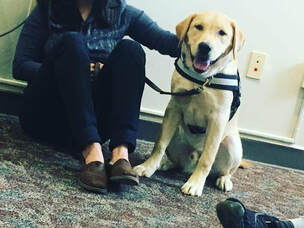 Do you need a PTSD Service Dog or Protection Dog? A person suffering from PTSD or severe anxiety faces challenges in every day situations, making life’s necessary tasks difficult to complete. Some sufferers believe a service dog would provide them with security, helping to alleviate the symptoms of PTSD, allowing for more freedom through a sense of security. PTSD is triggered in the patient by a terrifying event occurring to them or the witnessing of such an event. The symptoms that may be experienced are intrusive memories, avoiding places, people or activities, negative changes in mood, and changes in physical and emotional reactions. It is of natural course for the individual to want a service dog that would protect them from any future threat. Having a well trained dog at your side 24/7 may have a positive effect on your mood, increase your willingness to go places or engage in activities, and give you focus of something very positive that needs daily care and love. Service dogs for PTSD are trained in tasks to interrupt intrusive memories, provide the confidence to go out in public, and be a catalyst for a positive mood and provide the structure for emotional awareness. Dogs have incredible healing powers, known to those who love them. Protection dogs are trained to bark, attack and/or bite a person that is threanting their handler. Properly trained protection dogs are an excellent deterrent for would-be criminals and make their handlers feel safe in any situation of threat. Legalities and responsibilities of a protection dog are different from that of a service dog. Protection dogs are trained to attack to protect their handler. These types of dogs are NOT service dogs. Since they are not service dogs, protection dogs are not granted public access with their handlers. Dogs trained to attack are a very real danger to the general public, places that a service dog must navigate daily. While a protection dog may make a sufferer of PTSD feel very safe and confident, the drawback is that the dog cannot accompany them to the places that often cause the most significant symptoms, such as flying, shopping, working, and doing group activities. A protection dog stunts the healing process of PTSD because they can keep people away as opposed to encouraging positive interactions with friends, increase the handler’s anxiety through hyper vigilance, promote isolation because they cannot go into public places, and cause their handler to become more isolated because no one wants to hang around a dangerous or scary dog. The laws governing service dogs are not all encompassing, but it is made clear that service dogs are never to be aggressive or trained to be aggressive in any manner. Service dogs are held to a higher standard than pets because they can go into grocery stores, theaters, schools, places of work, and any place the general public uses. The public has a right to enjoy these places safely and not be exposed to or be threatened by aggressive dogs. Service dog handlers are legally responsible for their dogs’ behavior! If you suffer from PTSD or severe anxiety and want a service dog to help in your healing journey, it must be trained to perform specific tasks to interrupt intrusive memories, provide the confidence to go out in public, and be of a sound temperament to function as a catalyst for a positive mood and provide the structure for increased emotional awareness. A PTSD service dog performs tasks like turning on a light upon awaking from a nightmare, standing behind you for a sense of security, circling around you on command to help keep space between you and other shoppers, and provide deep pressure therapy during overwhelming emotional episodes. Bottom line is, if you want a protection dog, buy a protection dog. If you want healing, seek a properly trained service dog for PTSD. One is not the other and roles cannot be interchanged. We wish you health and comfort on your PTSD healing journey. May you be blessed with the unconditional love of man’s best friend, the dog. Appalachian Dog Training LLC provides fully trained service dogs for PTSD. Download or request an application today to learn more about PTSD service dogs and how they can make a difference in your life! 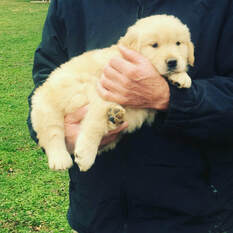 Picking the Perfect Puppy We field questions regularly from people wanting to add the perfect puppy, so we thought we would share our expertise with you! When you have decided on the most suitable breed of puppy, the next step is to start looking. Popular sources are Craigslist, the classifieds, internet search, Facebook search, and referrals from friends or other professionals. You will quickly discover a wide variety of puppies with a wide range of prices, contract terms, and other options. How do you sort through all of this?! First Pick! You get what you pay for, however price does not always reflect quality. When selecting a purebred puppy, only choose AKC/UKC/CKC registered dogs. This helps to prove the dog’s lineage and that it is in fact a purebred. Select a breeder who has done genetic testing on the damn and sire, to include hips and elbows certifications. This will not guarantee long term health, but it does show a breeder’s effort in improving the breed and producing healthy puppies. Breeders who have done the genetic testing pass the costs onto you when you buy a puppy, that is why higher quality puppies cost more. Require these documents when you see the puppies! Second Pick! Now that you have found a reputable breeder, it is time to schedule a visit! You must go with an open mind and be objective. You are now examining the facility, the breeder, breeder’s dogs, and puppies. The facility could be a small home or farm with several litters of puppies. It must be clean, well kept, and the dogs should be housed in runs that are clean, dry and well lit, if not kept in the house. A litter of puppies can’t be kept 100% clean due to the nature of puppies, but there should not be feces or urine in excess. The puppies should appear to be clean, in good health, and show appropriate activity levels for their age (when not napping!). No sneezing, coughing, runny noses, eye discharge, diarrhea, etc. Communicate with the breeder and assess their honesty with the information they provided on the phone or in the ad. They should never require the puppy be spayed/neutered before 17 months age as this can damage the developing puppy. Do not sign a puppy contract you are not comfortable with. The puppy should come with a health guarantee, read it! The damn and sire (if present) will tell you much about the puppies’ adult size, coat type, and temperament. If you don’t like the parents, you won’t be happy with your (adult) puppy. Third Pick! With a reputable breeder, AKC/UKC registered puppies in good health, a clean facility, and friendly puppy parents and are now ready to select your puppy! Do not choose the puppy that runs to you first! This will happen every time you sit down with a litter a puppies and it is only by chance that one of them comes to you first. Ideally the litter size is 4-8 puppies, to few and the mother spoils them and too many she has a difficult time attending to them. For pets, you generally want to select the most average puppy. You do not want the most active one nor do you want the calmest one. The puppy that is mildly active but also rests is, generally, the better pick. While being the first puppy to come to you has little to no value, you do want the puppy that continues to return to you! Puppy temperament tests provide very limited information and only assess the puppy on that day in that moment and are not indicative of adult behavior. A trait that does remain constant is what we at Appalachian Dog Training LLC call “arousal level”, indicated by tail carriage. If the puppies have their tails hiked up tight over their backs they are “high arousal” puppies. You will see this, especially when playing, but the tail should mostly be in line with the back “medium arousal”. A lowered tail or tucked tail may indicate significant fear. A “high arousal” puppy will become a dog that is more reactive, more likely to be a barker, and more likely to be higher energy and have a higher likelihood of behavioral problems as an adult. The ‘joe cool’ medium arousal puppies are easy going, more willing to accept new social partners, and be calmer in general. You now have the skills to pick the perfect puppy! Check out our Puppy Head Start Training for early training options!!  An open and honest evaluation of your dog and your situation will help you decide if you should train your dog to be a Service Dog. 4 considerations we use to determine the probability of success: 1. Dog evaluation Age, parents’ temperament, litter size, height/weight, health, known (?) early health/history, personality, work ethic, existing behavior challenges, previous training, current level of socialization, natural ability to retrieve/alert/paw etc. 2. Time commitment Training daily, weekly, yearly, maintenance training, training “in the moment” Care, feeding, walking, exercising, brushing, bathing, extra house cleaning 3. Costs Purchase cost/adoption fees, evaluation fees, veterinary care, spay/neuter, urgent care, high quality food, equipment, crate, supplies, toys, training costs 1-2 years, travel, transportation, outings 4. Lifestyle Dogs in training to become service dogs require activities that you may not regularly engage in such as outings to busy stores, walks in the woods, visiting amusement parks, attending children’s activities, meeting and talking with strangers daily, exercising, and more. The symptoms of your disability or child’s disability may specifically limit the types of activities you regularly engage in. A dog must receive fully comprehensive socialization, training, and public outings in all environments in order to help them develop into a service dog that can go any place at any time without experiencing stress or displaying ill behavior. These are not steps or training that can be “skipped”. Children or dependents whom must be looked after will need child care or a helper to supervise them while you exercise, train, and take your dog on public outings every day. Having a child or parent with a disability already limits the thought of any ‘free time’ for yourself, none the less to train or exercise your dog. Please be very honest with yourself when measuring the time available to train your dog. "Like" our page and stay tuned! 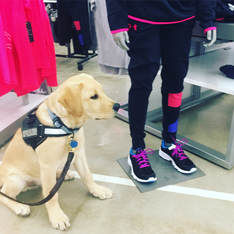 Meeting your Service Dog should be a magical moment. Instead, imagine receiving an untrained puppy instead of a helpmate? Now imagine that wild puppy cost you and your supporters $15,000-$30,000! Folks, this is becoming commonplace as bogus companies prey on the heartstrings of the some of the neediest people and their families. You might ask, how can this happen? Lack of Regulation. There are no federal or state training regulations for service dogs. Guidelines for minimum training standards for Public Access are set by the IAADP (International Association of Assistance Dog Partners) but there is no enforcement of this suggestion. NO test for Service Dogs. NO certification for Service Dogs. NO age requirement for Service Dogs. NO training, education, or certification required for Service Dog Trainers. People Taking Advantage. Dog Trainers and Dog Training Companies should be held to the highest standard, but again, there is no regulation of Dog Trainers. Anyone can become a Dog Trainer and buy a certification diploma to hang in their office without ever touching a dog. They can, and they do. The BEST Dog Trainers and Dog Training Companies hold themselves and their dogs to the highest standards and do not provide services that contribute to poorly trained Service Dogs, inappropriately behaved Service Dogs, or Fake Service Dogs. Just because a company is operating as a Not-for-Profit does not mean that it is not profitable and does not guarantee that they are providing Service Dogs that meet or exceed IAADP minimum Public Access requirements or have proper Dog Trainer education & experience. Investigate Your Service Dog Company. Look for education, experience and credentials of the owners and Dog Trainers. Research each dog training school, program or class attended. If the training is online, verified by an online test, or easily obtained by paying a “membership fee”, question the qualification of the trainer. Can’t find education or training? Run faster than your dog! There are well qualified trainers available, do not settle. Ask for referrals of current Service Dog clients and call them to learn about their experience. Meet your Service Dog Trainer, the company, and your potential Service Dog. See how the Service Dog in Training is matched with you (or your child, etc.). Verify the facility is clean and dogs are healthy and well cared for. Find out the details of what specific tasks, obedience commands, and Public Access training your Service Dog will have completed before delivery. GET THIS IN WRITING! Ask what age your Service Dog will be when training is completed. Lastly, Service Dogs are NOT PUPPIES!!!!! They should have completed 1-2 years of training and should be spayed or neutered by age 2. Service Dogs should come with a health guarantee, read the documents carefully to learn what is covered, the limitations, and if they have a program for replacing your Service Dog or refunding your money if the dog’s health becomes poorly. Support Training should include a comprehensive delivery training for you to learn each of the dogs commands and tasks, experience going out in public, and how to maintain your dog's health, exercise and training for a lifelong partnership. The company should offer support training for the life of your Service Dog. Don’t become a victim, be an Advocate for Properly Trained Service Dogs! 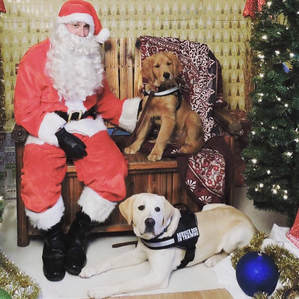 The holidays can be very stressful for our pets. We are changing our routines with vacations, inviting guests over, and exercising less because of cold weather. Family dogs synchronize with our moods, feeling the stress we carry. It is easy to overlook these minor changes, but to your dog, these minor changes are gigantic changes. Add in a dog that is already a bit anxious with separation or fearful of new people and this can lead to unexpected behavior. The Trainer’s most common story is based on “he/she never did this before” and “we are shocked” wanting to know why their dog did XYZ. The dog’s behavior is a result of something, to be thought of as a symptom. For example, when a dog snaps at another dog, we need to identify the root cause of that behavior. There is a difference between a dog that snaps out of fear versus a dog that snaps to assert dominance. A good dog trainer will be able to evaluate the cause of behavior and provide an avenue to changing the motivation for the snapping, thus ending the snapping! Although you may not be able to decode the “why” of your dog’s unusual behavior, you can make a list of changes that may be affecting or stressing your dog. One schedule change may not cause your dog to chew up his bed but adding in new guests each day and little outside time and voila! Good-bye fancy orthopedic, bolstered dog bed. What can you do? Be aware. Be conscious. Be Flexible. 1. Be Aware. Plan for your days off, extra workload, dinner parties, family visiting, your own travels and any thing you partake in that varies from the “daily grind”. Simply being aware will help to see the early signs of stress. These include: pacing, barking, lip licking, yawning frequently, paw licking, and destruction. When you see these early signs STOP and spend 5 minutes with your dog. A short walk, little ball game or food toy as you sit on the floor with him or her can change their day. 2. Be Conscious. Watch the weather report and fit a walk, even if only 5 minutes, into your day at the warmest times or takes extra long walks on rain-free snow-free days. Have a long work week or late dinner party? Hire that dog walker! A trustworthy dog walker is worth their weight in gold on cold snowy days. Once per week or five times a week will help your dog greatly. 3. Be Flexible. Change your walking routes, play new games with your dog, and be ready to walk your dog when the weather does break. When the weather won’t give, or your dog is really bored, take them to pet-friendly stores. Your dog will love the field trip and will be tired from all the new sights and smells. Remember you are not the only one feeling Holiday Stress. Your dog that is looking at you right now, waiting for you to put the phone down, feels your stress. Grab your leash and go play! |
AuthorKatie Weibel, Master Dog Trainer. Providing training for companion, service and working dogs, sharing knowledge and expertise. Archives
April 2023
Categories |
Address (by appointment):
|
Phone/Text |
|


